This April, LET’S LEARN ABOUT…Celebrating the New Year in Southeast Asia!
By now, most of us would have already settled into 2021 and be going about our new routines. For many people, New Year typically falls on 1 January. Others celebrate the start of a new Lunar year in late January to late February each year. But some countries in Southeast Asia celebrate the New Year in April.
Thailand, Myanmar, Laos, and Cambodia celebrate their New Year sometime around 13 to 16 April. The date is based on traditional astronomical calculations: when the sun's position enters the group of stars that make up the constellation Aries. In Southeast Asia, this time of year was traditionally when harvests were completed, so people had time for celebrations.
New Year is called Songkran in Thailand, Thingyan in Myanmar, Choul Chnam Thmey in Cambodia, and Pi Mai in Laos. The names differ, but there are many similarities in the way New Year is celebrated.
For example, water is an important feature as the New Year signifies purification. Families clean their homes and Buddhist images and statues of the Buddha. They sprinkle water at monks and other who pass by their home. People splash water at one another to “cleanse” for the New Year.
Celebrating with family is very important. Those in the city go back home to their village to spend time with loved ones. They visit temples, eat festive dishes, and play traditional games together.
Many who celebrate believe this is a time to give to those who are less fortunate. In Buddhist countries, this is related to the practice of merit-making.
OBJECTS IN ACM COLLECTION
Let’s take a look at some objects used during New Year in different parts of Asia.
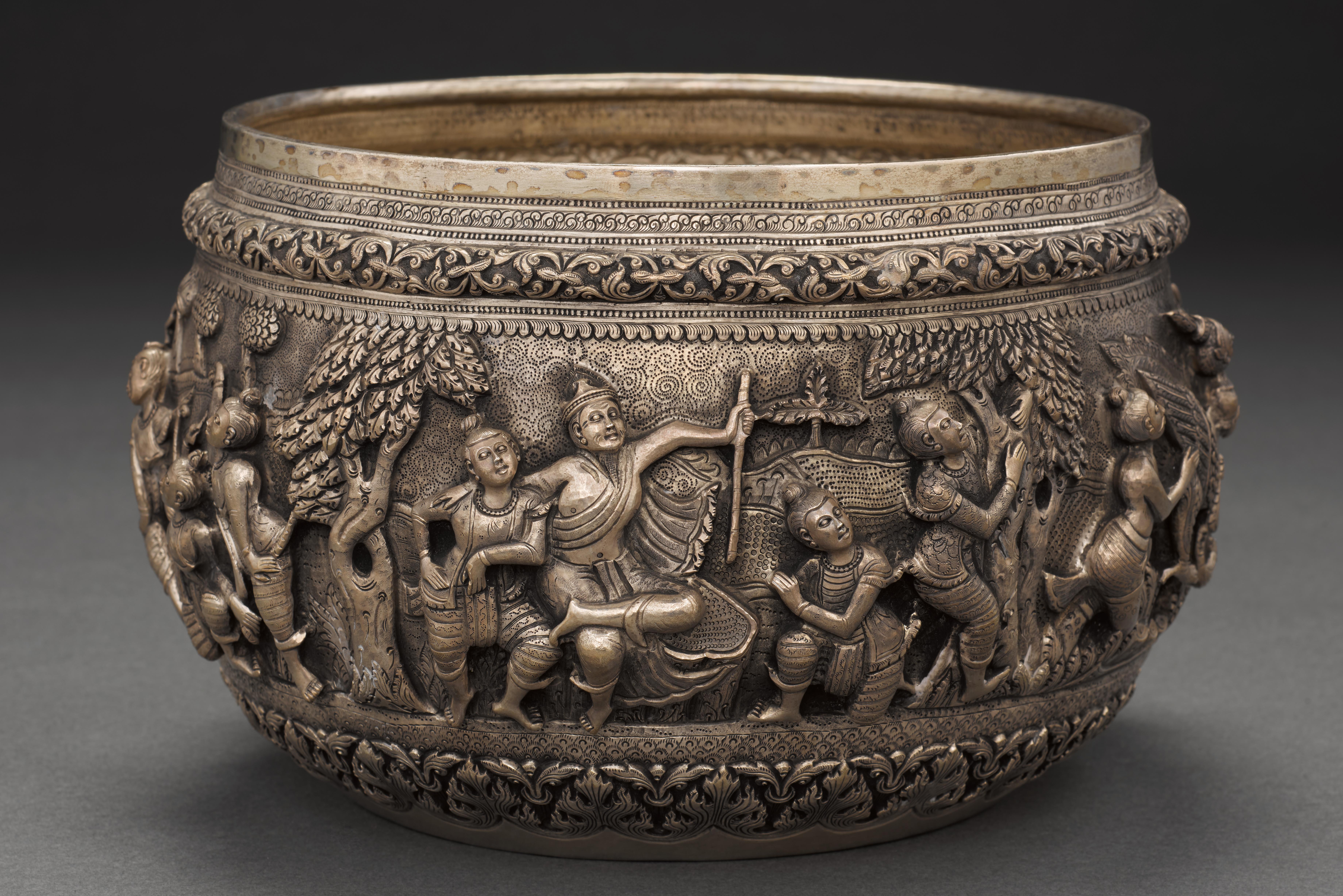 |
|
Ceremonial bowl
Myanmar, late 19th or early 20th century
Silver
2010-0047
Anonymous gift
|
This bowl is so finely crafted that it was likely created by a master silversmith. It is decorated with scenes from the Yama Zatdaw, the Burmese version of the Ramayana. Notice how many different levels there are in the decoration – some figures stand out in high relief (3-dimensional), other details are much closer to the surface (low relief).
The shape was inspired by a monk's alms bowl, which they use for collecting donations of money, food, or other goods. Decorated silver bowls like this are traditionally used during New Year, for holding scented water that is sprinkled to “wash away” the bad from the previous year.
You can find this bowl in the Ancestors and Rituals Gallery on Level 2.
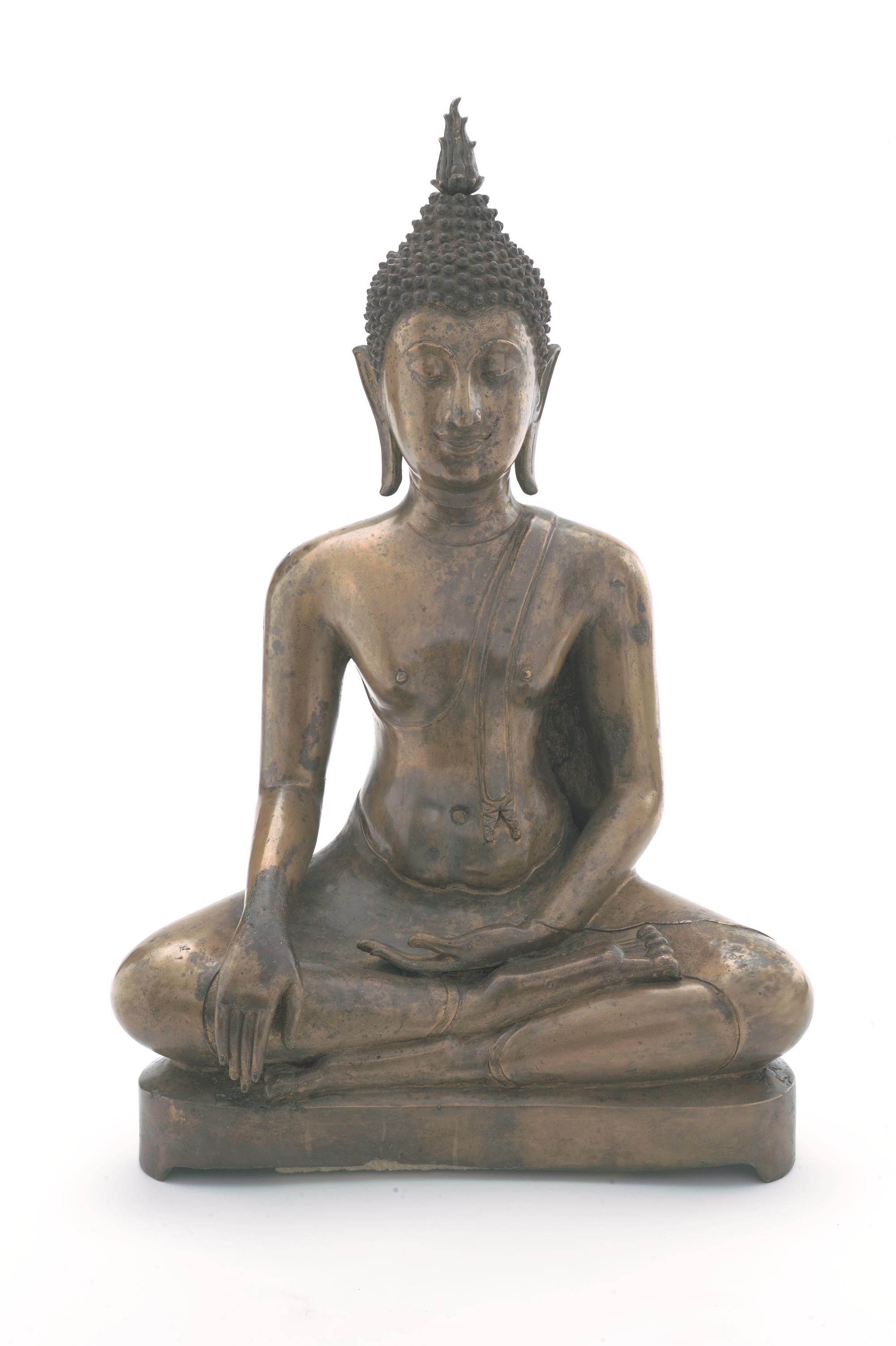 |
|
Seated Buddha
Thailand, Sukhothai, 15th or 16th century
Bronze
2011-01952
|
During New Year, some people pour water over Buddha statues in their homes and at temples, in an act of ritual cleansing. This seated Buddha was made in Thailand during the Sukhothai period about 600 over years ago. Sukhothai was the first royal kingdom of the Thai people.
Made of bronze, this Buddha has long, curved earlobes and a flame at the top of the head. The flame rises from the "ushnisha", a bump on the head which symbolises the Buddha's wisdom.
You can find this statue in the Ancient Religions Gallery on Level 2.
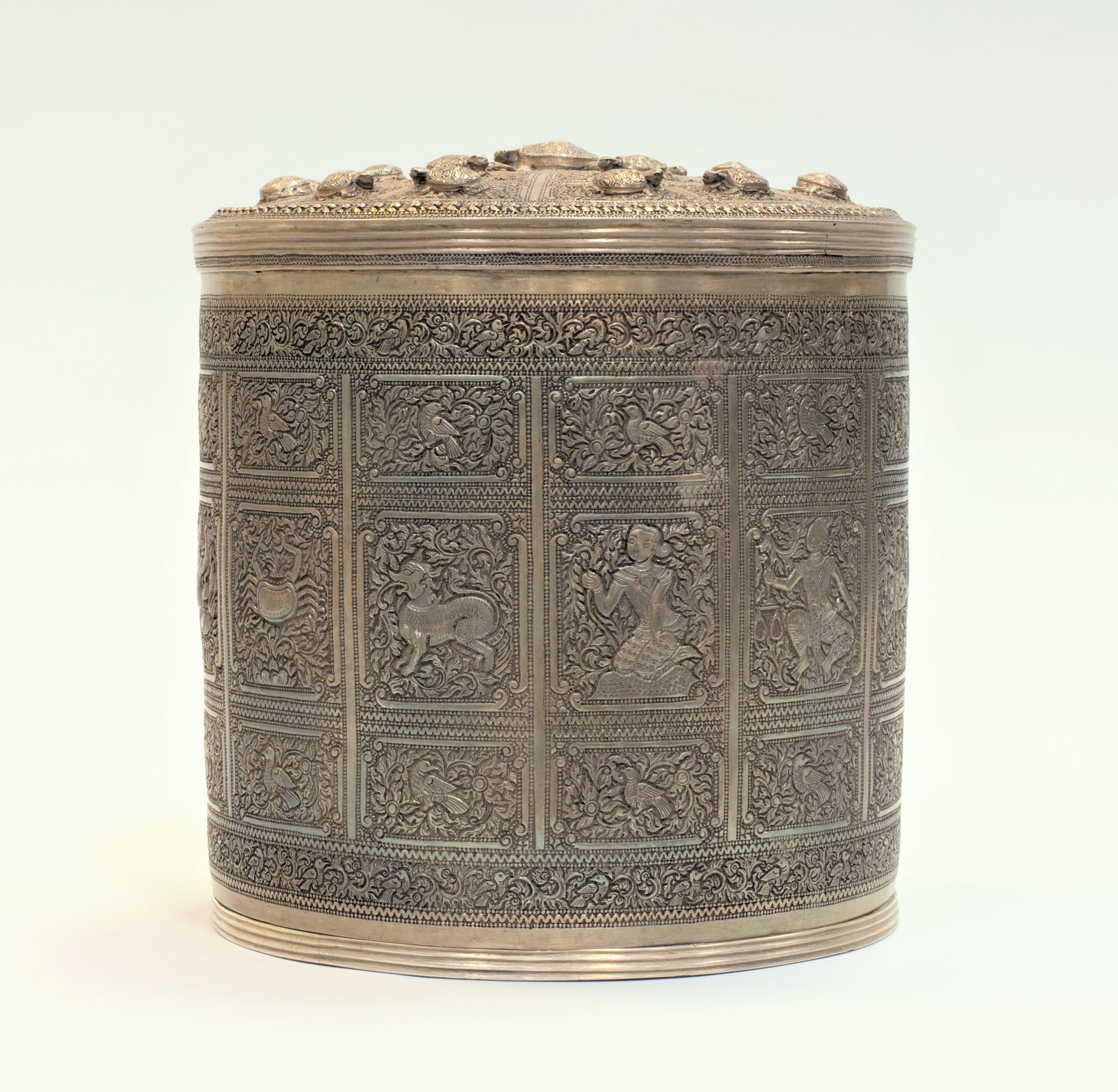 |
|
Betel box
Myanmar, Shan State, dated 1895
Silver
On loan from a private collection
|
It used to be a traditional custom in many parts of Southeast Asia to serve betel to guests as a welcome. Betel chew is made up of ground nuts and flavourings wrapped in a betel leaf.
This silver betel box was made in Myanmar about 125 years ago. Inside are five containers and a tray to present ingredients for betel-chewing. The decoration on the outside includes the 12 symbols of the Burmese zodiac, and on the cover are several tortoises.
These containers had a special place in households during New Year celebrations and other festive occasions. You can find this betel box in the Ancestors and Rituals Gallery on Level 2. What zodiac symbols can you spot?
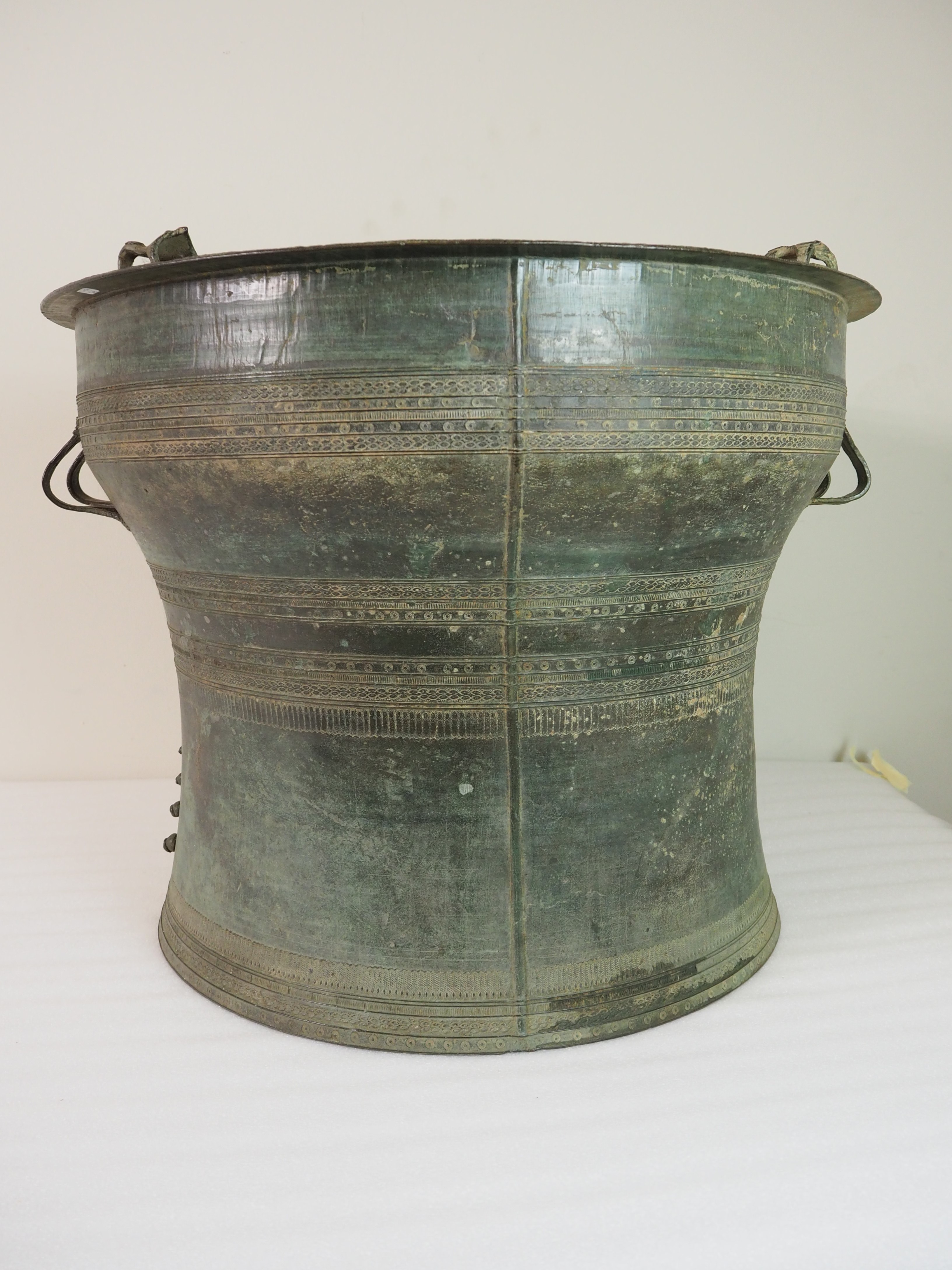 |
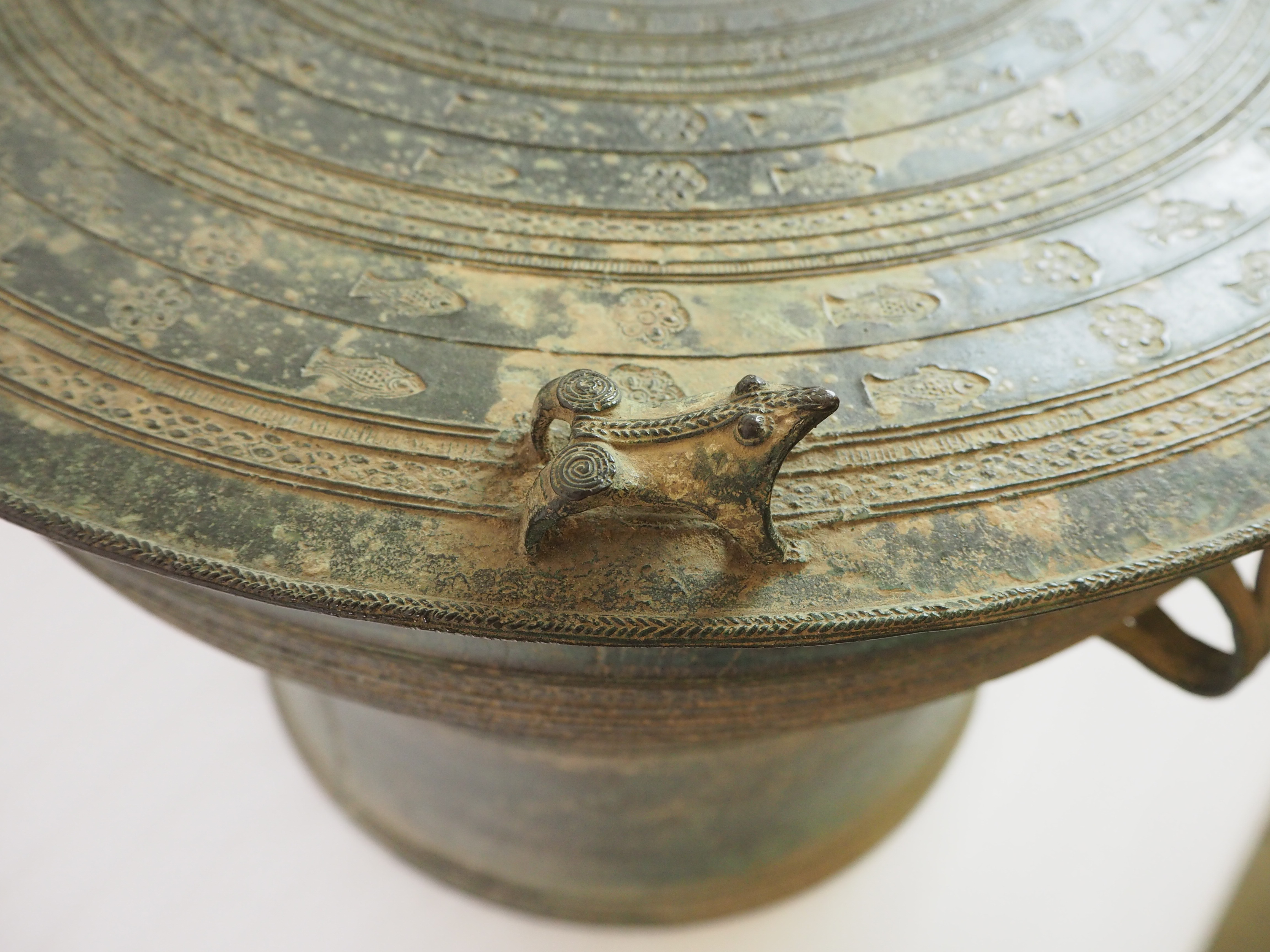 |
|
Frog drum
Myanmar, Karen State, 19th or early 20th century
Bronze
On loan from a private collection
|
The form of this large drum is related to drums made by people of the ancient Dong Son culture of Vietnam around 2,000 years ago. They have been unearthed at many sites in southern China and Southeast Asia. This more modern example was made in the mountainous Karen State of south-eastern Myanmar. There are decorations of birds, fish, and frogs on it. During festivals when live music was performed, drums like this were carried around the village on a pole connected by ropes slung through the side handles.
Have you played on a metal drum before? What sound do you think it would make? You can find this drum in the Ancestors and Rituals Gallery on Level 2.
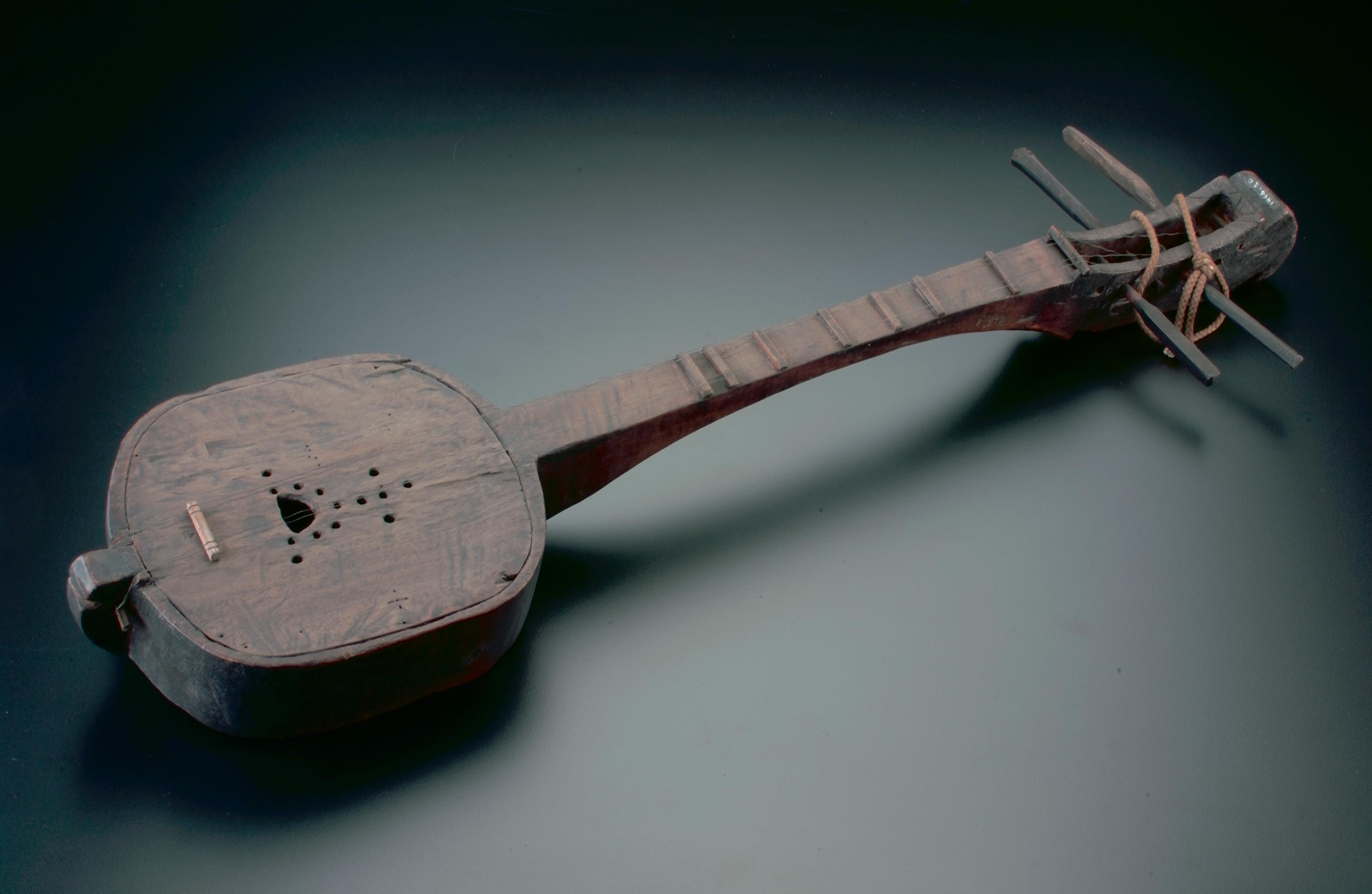 |
|
Stringed instrument
Northern Thailand, early or mid-20th century
Wood, length 85 cm
1994-00020
|
Does this musical instrument look familiar to you? What other instruments does it look like?
The hilltribes of Thailand have similar musical traditions and play a range of percussive, wind, and string instruments. Like everywhere, music is played during festive occasions, and for relaxation. Among the Lisu peoples of southern China and the mountainous northern regions of Thailand and Myanmar, for instance, men play small stringed, lute-type instruments like this one called "chiben" at New Year dances.
CREATE
During the New Year festival, sweet-smelling flowers are put into a bowl of water to freshen up the air.
Inspired by the Songkran festival, let’s make a craft! You will need: construction paper, scissors, coloured pencils, and a bowl with water.
Steps
- Draw a few flowers on the coloured paper.
- Cut out the flowers, making sure to cut the petals so they can be folded inwards into the middle, forming a bud.
- Let the buds fall into the bowl of water and see them bloom!
Tag us @ACM_SG #LearningatACM for a chance to get your creation featured.
EXPLORE
Head to NHB’s one-stop heritage portal Roots.sg to read more about the objects featured:
Ceremonial bowl
Seated Buddha
Stringed instrument
Would you like more of these resources? Come back to learn new things every month.
Missed a monthly post? Not to worry, we keep past topics here for you.
What else would you like to learn about? Tell us here.
There’s more!
Check out other videos and download e-resources inspired by the objects in ACM’s collection.